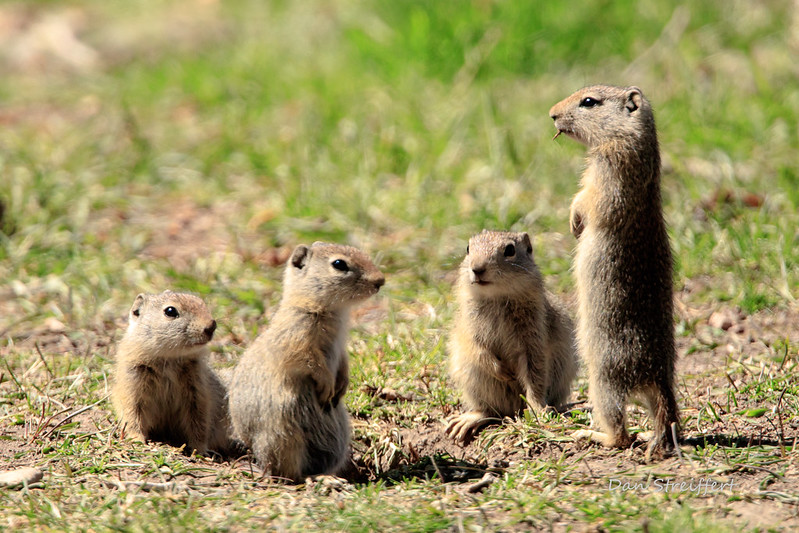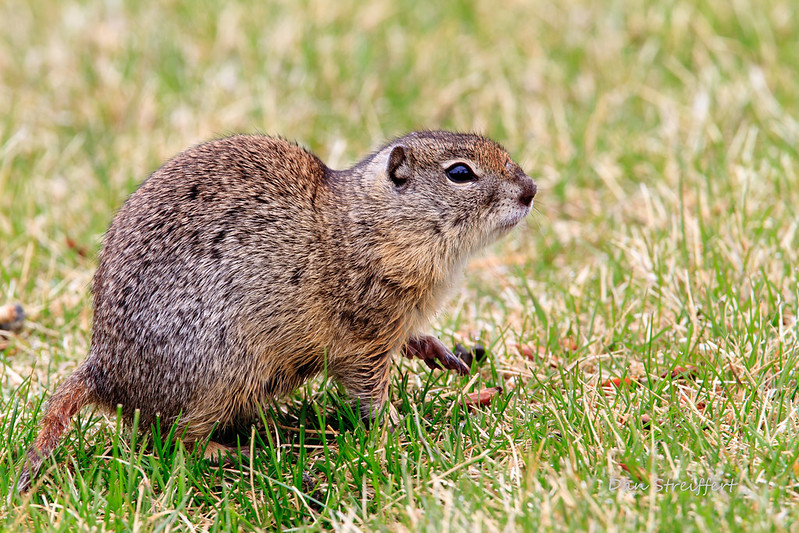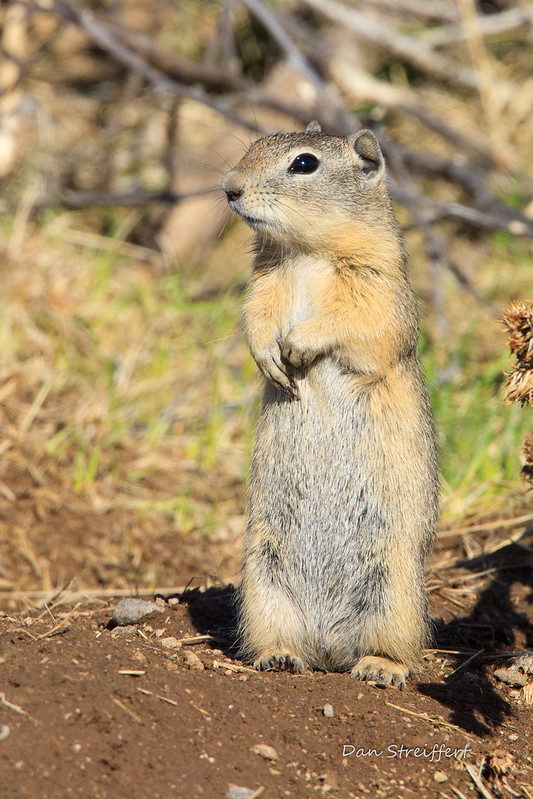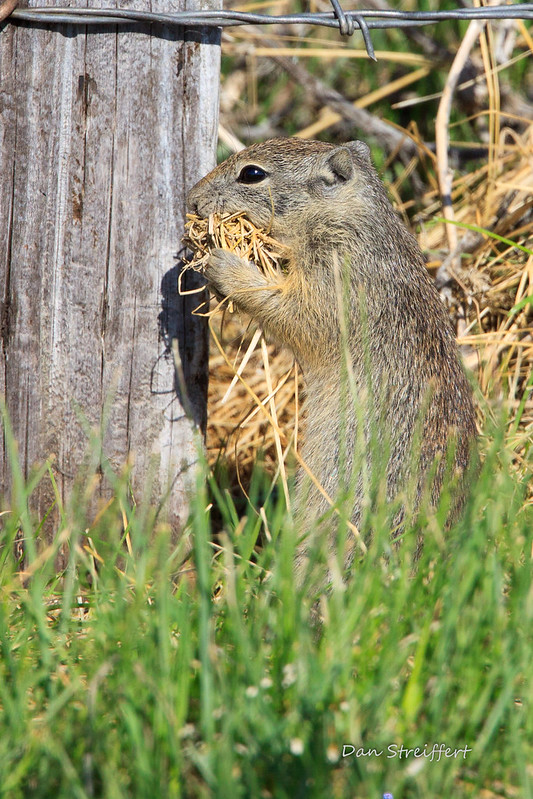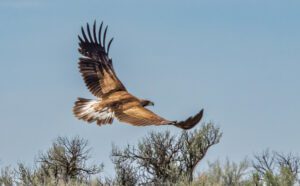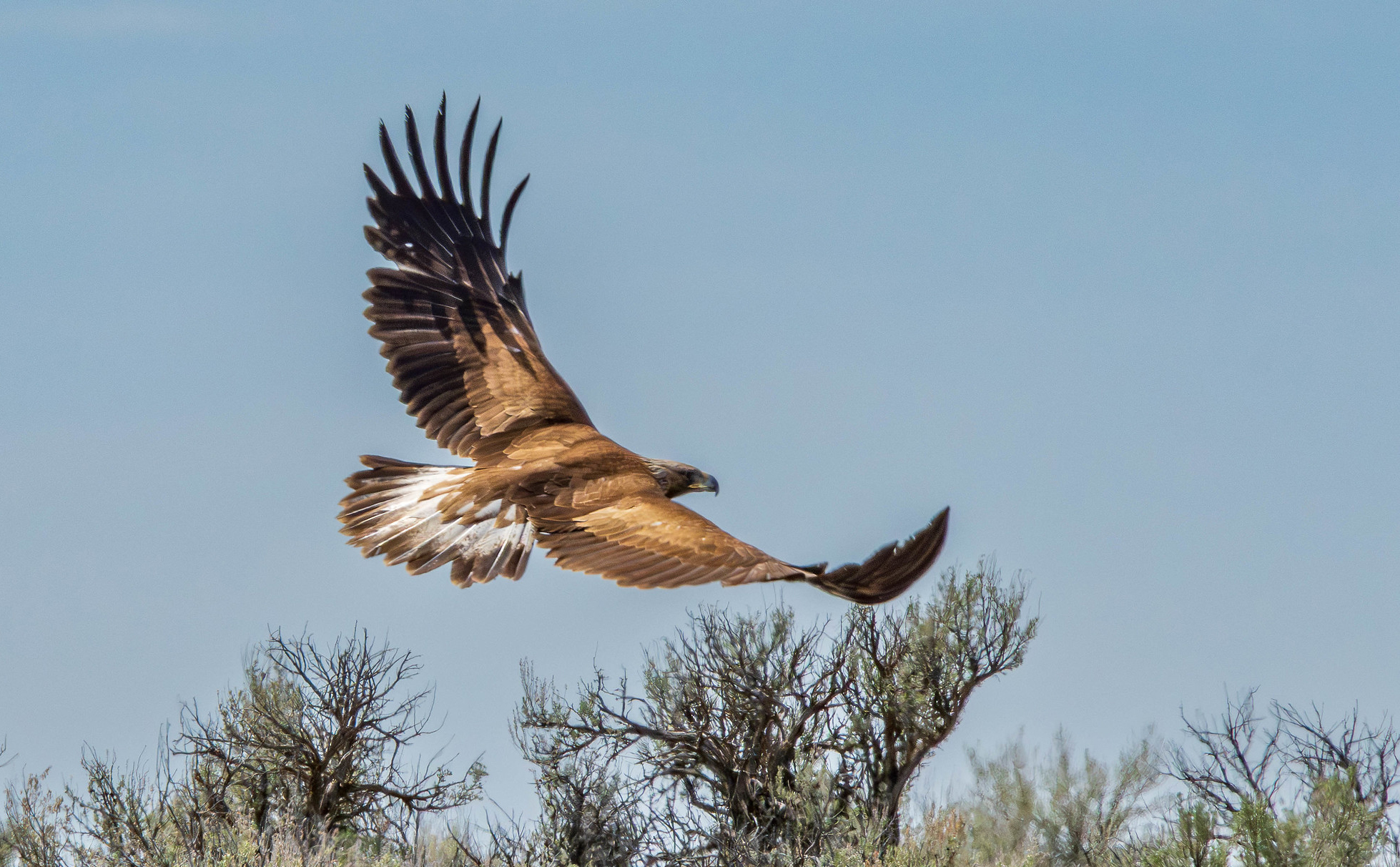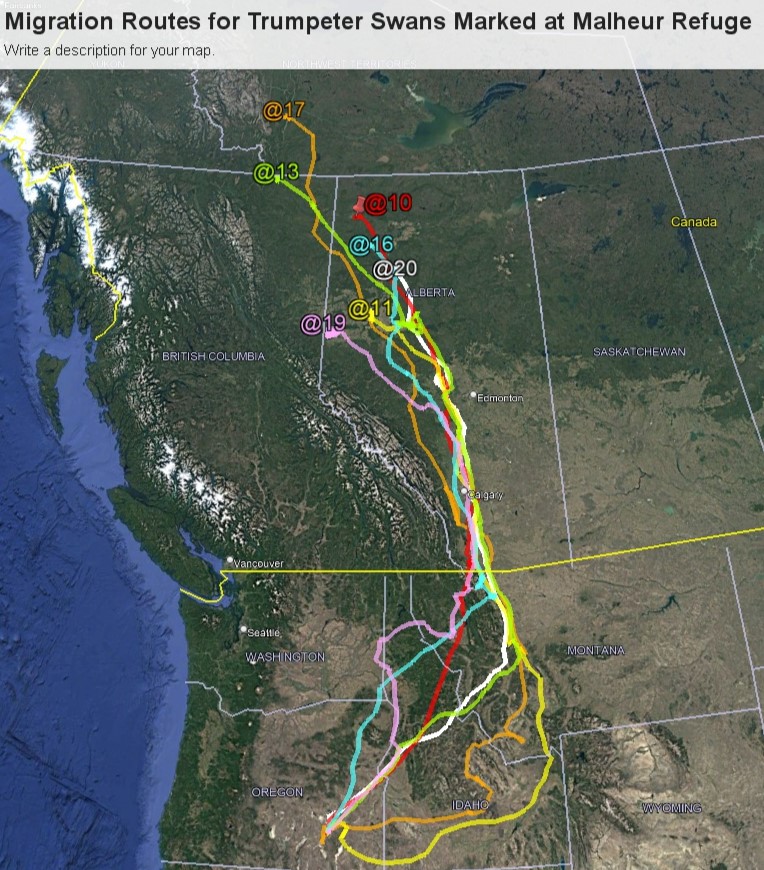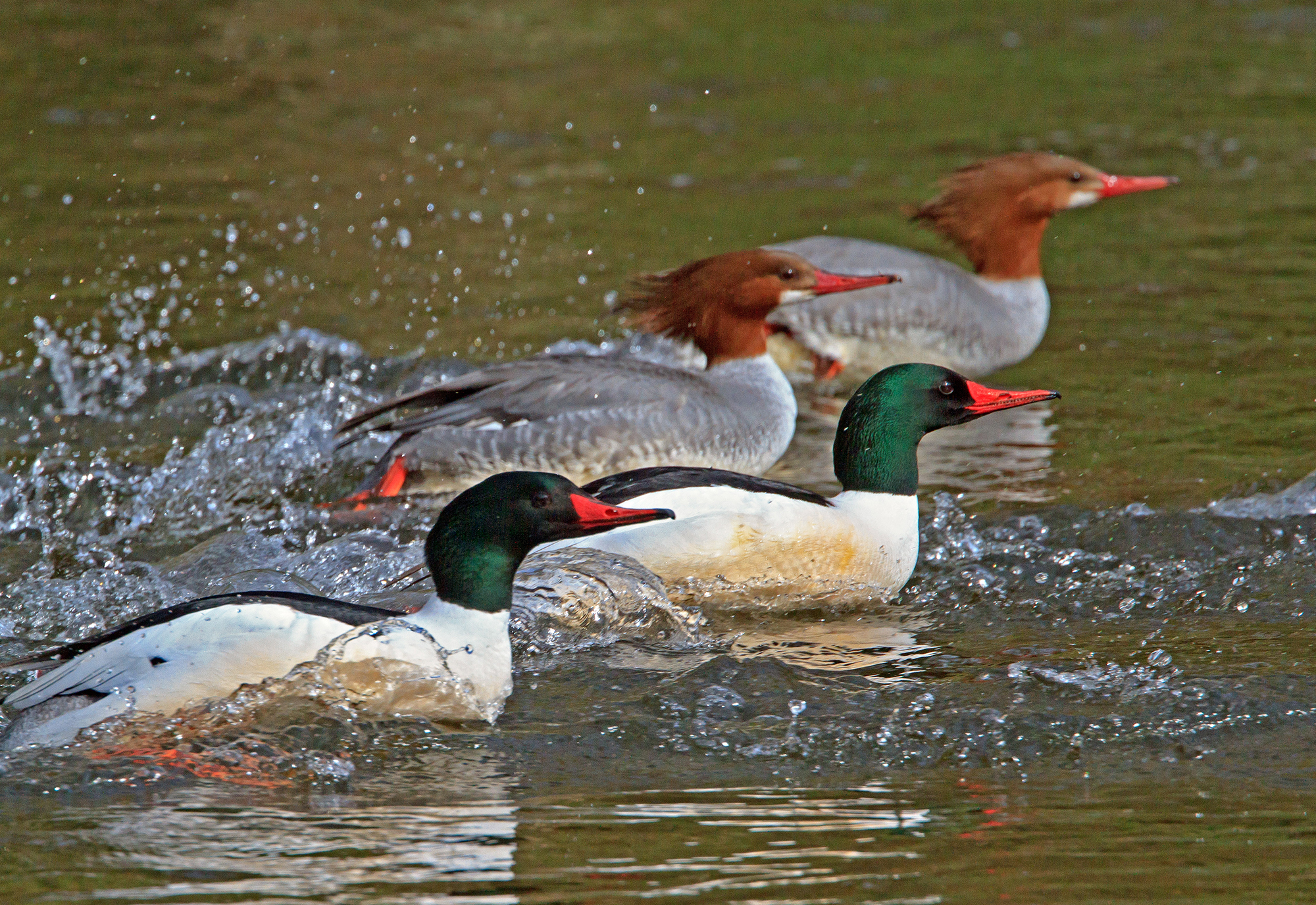Written by Linda Craig/ Photos by Dan Streiffert
Visitors to the Refuge during March through July couldn’t help but notice the hundreds of scurrying, little mammals that crowd under the bird feeders at Headquarters. These six-inch, grey-brown rodents are Beldings Ground Squirrels.
Beldings Ground Squirrels are one of thirteen species in the genus, Urocitellus. Most members of the genus live in western North America. They are related to chipmunks and marmots and are part of the subfamily of squirrels which usually lives on the ground rather than in trees.
Our Urocitellus, beldingi, is found throughout eastern Oregon, southwestern Idaho, and central California and Nevada, generally in lower elevation areas of grasslands and sagebrush.
Although the “sage rats,” a local, dismissive name for them, are cute little critters, the many burrows they dig throughout the Headquarters lawns and the damage they do to the roots of trees and shrubs can be a problem. Because they relish the easy food that is available under our bird feeders, their numbers in the spring can be a little overwhelming.
Now, in late July, the ground squirrels are suddenly missing! We are no longer greeted each time we step outside the Nature Center to their squeaky trills that make up the Beldings’ family communications.
The ground squirrels haven’t moved on; they have just moved underground. Beldings, and other similar species in the genus who also live where summer temperatures are high, deal with the heat and the drying vegetation by going into estivation or early hibernation when the days get hot, and the grass gets brown. Their underground period lasts for eight to nine months.
It is understandable, then, that they feed so voraciously in the spring and early summer that their body weight more than doubles. They do not store food in their underground burrows, so what they eat when they are above ground must last more than half of the year.
We won’t expect to see them again until the ground begins to thaw in February or March. Then, there will be a flurry of activity as the adult males fight fiercely for the right to mate. Only the strongest males will succeed. Females will establish their own burrow and have just one litter of three to eight. The young, called pups or kits, are born blind and won’t emerge from the burrow until they are about two months old. Thus, the cycle begins again, and the scurrying little rodents will be a major part of the Malheur experience for another season.

